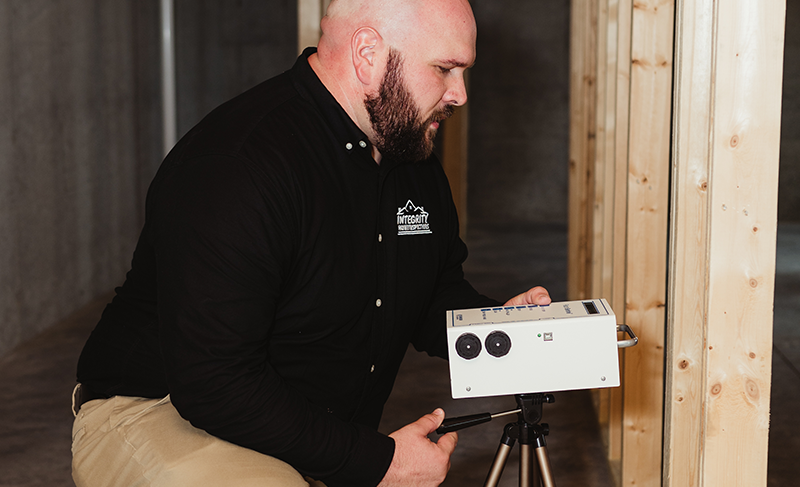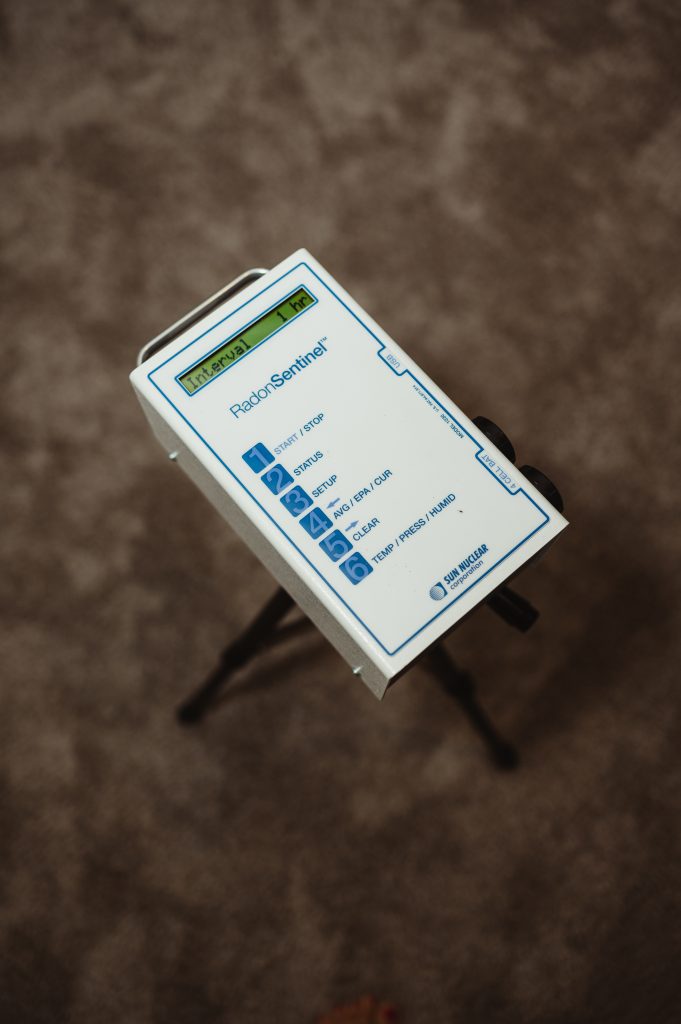
Radon is a radioactive gas produced from naturally decaying uranium. Radon can penetrate building materials and occupy a home. Radon is the 2nd largest cause of lung cancer, taking nearly 20,000 lives per year. The Iowa Radon Survey shows that Iowa has the highest percentage of homes containing a reading at or higher than 4.0 pCi/L, which is the action level set by the US EPA.
Radon has no odor or taste and cannot be seen. The only way to know that radon does not dwell within your home is to have your home tested. Radon testing is a service that we offer to our clients with or without a home inspection.
Visual Inspection
During the visual inspection we inspect the mechanics of the basement/crawlspace and look for possible points of entry in a home. The visual inspection can help us determine where to test within a home, which gives the clients the representation of existing radon levels.
Mitigation System Check
Another part of our service is to check the existing radon mitigation system. In our report we will document the type of system, its components, and weather the system appears to function. During the actual testing the mitigation system stays on, so we will be able to ensure that the system is up to par.
Radon Testing
The radon testing portion of our service takes a minimum of 46 hours to complete. After this period of time we will return to the tested home to retrieve the monitor and test data. A PDF report is produced with test data. This report will contain the average radon concentration (measured in pCi/L). EPA guidelines state that radon levels should be less than 4.0 pCi/L. If the levels are over the action level we recommend radon reduction through radon mitigation of the home. We know plenty of professionals that can install these systems if necessary.
 Our Radon Monitors
Our Radon Monitors
Integrity Home Inspections uses 1030 RadonSentinel Continuous Radon Monitors by Sun Nuclear. Continuous Radon Monitors offer more information than a charcoal canister and other types of passive radon monitors. The 1030 can be programmed to perform a delayed start, which can be useful if an owner or seller fails to establish the 12 hour closed-house conditions. These monitors also record measurements every hour, which includes pCi/L, temperature, relative humidity and barometric pressure. These measurements can be valuable when looking for relations to higher/lower radon levels, and also provide information on tampering.


 Our Radon Monitors
Our Radon Monitors